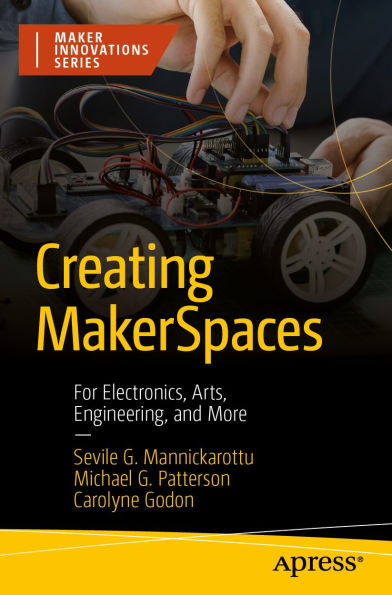It’s not enough to just buy a few 3D printers or have some electronics. MakerSpaces span a variety of areas, including art, biology, chemistry, electronics, and mechanics. As you start one, you need to make sure you have the right tools, the right supplies, and the right operation. First, you’ll explore the variety of tools and supplies available, from low-cost to expensive, and see how to use them. Then select the best tools for your MakerSpace, whether for a library, a school, or to open-up to a community. The next phase is operating a MakerSpace. We’ll explore how to lay out your space, control access, and provide training. In addition, this book offers suggestions on how to manage your staff, whether part-time, full-time, or volunteers.
Creating MakerSpaces is your pathway to a safe, well-maintained, and great environment for Makers in your community!
What You'll Learn
• Source the skills you need to help your community of Makers
• Manage your MakerSpace effectively once it’s set up
• Provide the right training to use and maintain your space safely
Who This Book Is For
Anyone interested in starting a MakerSpace
It’s not enough to just buy a few 3D printers or have some electronics. MakerSpaces span a variety of areas, including art, biology, chemistry, electronics, and mechanics. As you start one, you need to make sure you have the right tools, the right supplies, and the right operation. First, you’ll explore the variety of tools and supplies available, from low-cost to expensive, and see how to use them. Then select the best tools for your MakerSpace, whether for a library, a school, or to open-up to a community. The next phase is operating a MakerSpace. We’ll explore how to lay out your space, control access, and provide training. In addition, this book offers suggestions on how to manage your staff, whether part-time, full-time, or volunteers.
Creating MakerSpaces is your pathway to a safe, well-maintained, and great environment for Makers in your community!
What You'll Learn
• Source the skills you need to help your community of Makers
• Manage your MakerSpace effectively once it’s set up
• Provide the right training to use and maintain your space safely
Who This Book Is For
Anyone interested in starting a MakerSpace

Creating MakerSpaces: For Electronics, Arts, Engineering, and More
356
Creating MakerSpaces: For Electronics, Arts, Engineering, and More
356eBook (First Edition)
Related collections and offers

